| Etymology | Genus | Thorny, referring to the thorns in certain species (this speces is thornless) |
|---|---|---|
| Species | Ear-shaped, referring to the lobing fruit pods | |
| Family | Fabaceae | |
| Synonyms | - | |
| Common Names | Acacia, Earleaf Acacia, Australian Wattle, Earpod Black Wattle | |
| Status | Exotic: Naturalised | |
| Form | Tree | |
| Native Distribution | Indonesia, Papua New Guinea, and northern Australia | |
Diagnostics:
The foliage of the Acacia is distinctive. The narrow, sickle-shaped phyllodes arranged with the margins facing vertically creates an open yet bushy canopy.
Acacia mangium is another similar looking species in Singapore. However, their phyllodes are much broader and not sickle-shaped.
Interesting Facts:
The "leaves" of Acacia auriculiformis are actually modified leaf stalks (called phyllodes) which are flattened and enlarged. The true leaves, bipinnately compounded, are only visible on newly germinated seedlings. The yellow arils are attractive to birds, which feeds on them together with the seeds, the latter being passed out and hence serving as an efficient dispersal agent.
The Acacia was widely cultivated by the then Parks and Recreation Department (now National Parks Board). In 1988, it was most abundant cultivated tree in Singapore, numbering up to 54,216 individuals (Aggarwal, 1988). However, it was abandoned because of it generated considerable amount of leaf litter (Wee, 1989). By then, it had already naturalised and is often a dominant species in young secondary forests. In other Southeast Asian countries, they are planted to produce wood for furniture and charcoal, as well as pulp to produce paper (Wee, 2003).
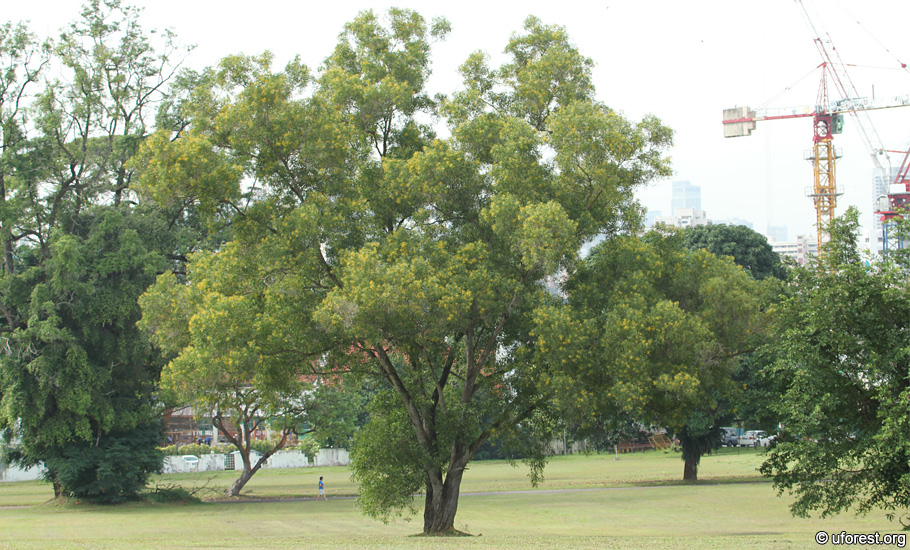
A lone stand of Acacia auriculiformis in Bidadari Cemetery.
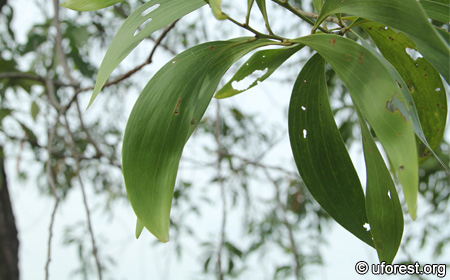
The phyllodes are sickle-shaped and veins are parallel to the margins.

The true leaves are the first few leaves after germination.
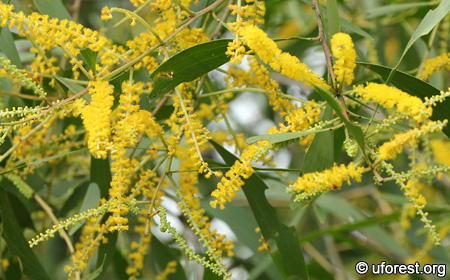
Flowers are numerous and borned along a stalk.
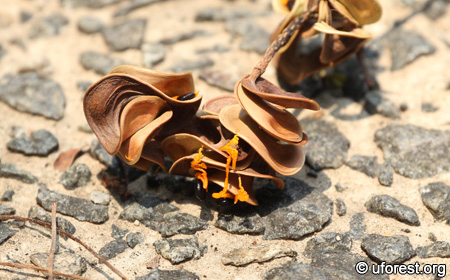
The pods are curled and split to release black seeds hanging on yellow arils.

The narrow and sickle-shaped leaves makes the species identifiable.
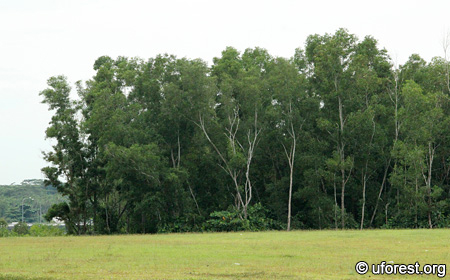
A forest made entirely of Acacia.
References
Aggarwal N. (1988) Over half a million Singapore trees go on computer. The Straits Times, 19-Oct-1988.Wee YC. (1989) A Guide of the Wayside Trees of Singapore. Singapore Science Centre, Singapore. 160 pp.
Wee YC. (2003) Tropical Trees and Shrubs: A Selection for Urban Planting. Sun Tree Publishing, USA. 392 pp.
Author: Siyang
Posted: 2012-12-31 / Modified: 2020-10-20